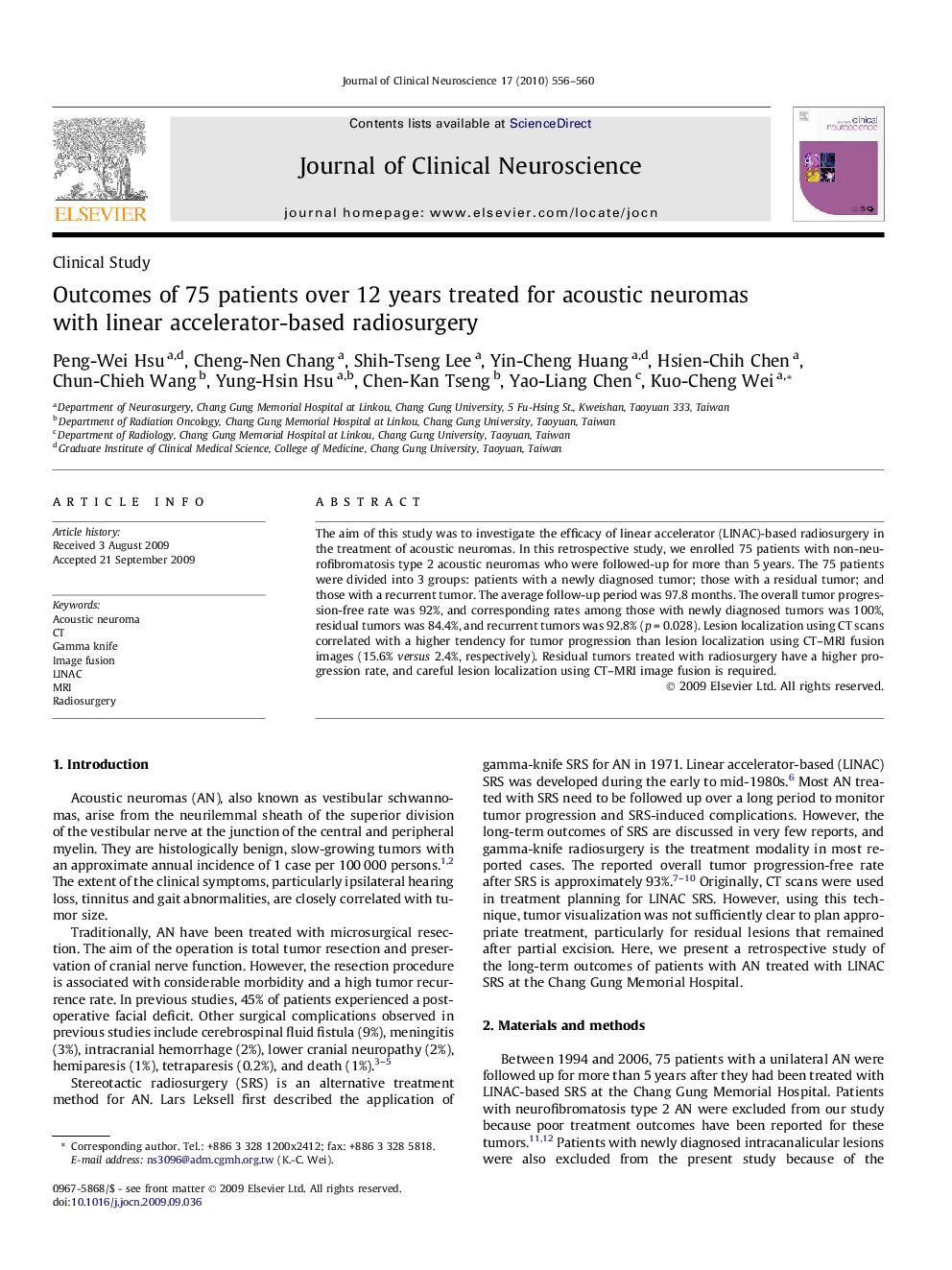| Article ID | Journal | Published Year | Pages | File Type |
|---|---|---|---|---|
| 3063074 | Journal of Clinical Neuroscience | 2010 | 5 Pages |
The aim of this study was to investigate the efficacy of linear accelerator (LINAC)-based radiosurgery in the treatment of acoustic neuromas. In this retrospective study, we enrolled 75 patients with non-neurofibromatosis type 2 acoustic neuromas who were followed-up for more than 5 years. The 75 patients were divided into 3 groups: patients with a newly diagnosed tumor; those with a residual tumor; and those with a recurrent tumor. The average follow-up period was 97.8 months. The overall tumor progression-free rate was 92%, and corresponding rates among those with newly diagnosed tumors was 100%, residual tumors was 84.4%, and recurrent tumors was 92.8% (p = 0.028). Lesion localization using CT scans correlated with a higher tendency for tumor progression than lesion localization using CT–MRI fusion images (15.6% versus 2.4%, respectively). Residual tumors treated with radiosurgery have a higher progression rate, and careful lesion localization using CT–MRI image fusion is required.
